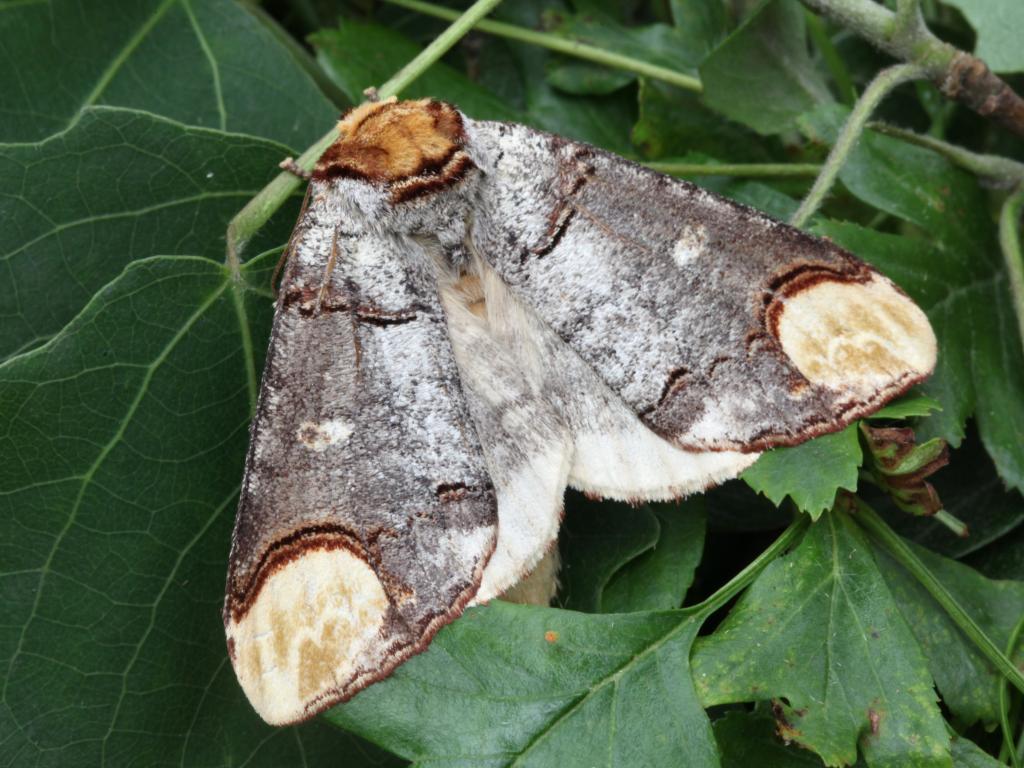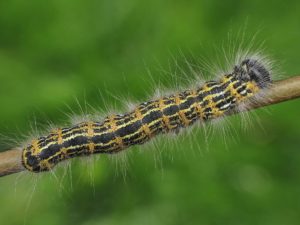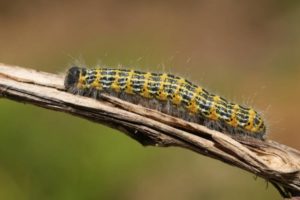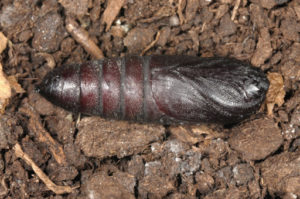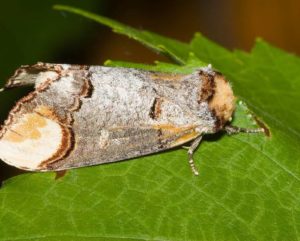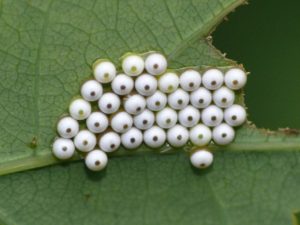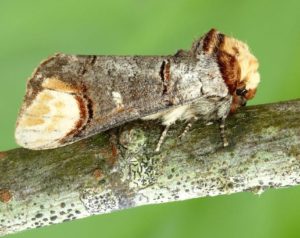Buff Tip Moth (Phalera bucephala)
The buff tip moth is a member of the prominent moths family. Swedish zoologist Carl Linnaeus first described it in the10th edition of Systema Naturae published in 1758.
butterfly-conservation.org
Scientific Classification
- Family: Notodontidae
- Genus: Phalera
- Scientific Name: Phalera bucephala
Description and Identification
Caterpillar
The larvae are yellow and black, initially more social but becoming solitary as they become older. Initially the larvae appear pale, turning to a striking black coloration marked with yellow, and white lines.
The immature ones are social, while they become more matured in their adult stage.
Adult Moth
Sexual Dimorphism: Present but not prominent.
Color and Appearance
Forewings: When the wings are opened, they are gray with a buff patch at the edge. This makes them look like a broken twig. When the wings are closed, the color and pattern is the same, and their similarity with a twig gets even more prominent.
Hindwings: When the wings are opened, they are creamy-white. When the wings are closed, they are completely hidden.
Average wingspan: 55–68 mm
Flight pattern: Erratic
Season: June – July
Quick Facts
| Distribution | Europe, Asia up to eastern Siberia |
| Habitat | Gardens, hedgerows, scrub, and open woodlands |
| Lifespan of Adults | Not recorded |
| Host Plants | Mainly birch, hazel, oak, and sallow; also seen near alder, beech, elm, hornbeam, lime, rowan, and sycamore plants |
| Adult Diet | Not recorded |
Scientific Classification
- Family: Notodontidae
- Genus: Phalera
- Scientific Name: Phalera bucephala

